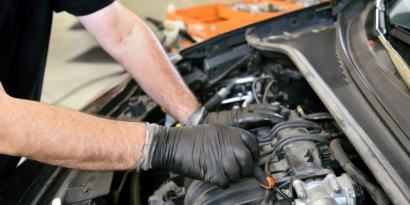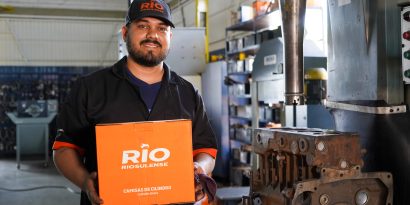Formula 1 has always been the pinnacle of automotive engineering, and the engines are the beating heart of the machines that secured historic victories and thrilled millions of fans worldwide. From the roaring V12s of the 1990s to today’s cutting-edge hybrid units, Formula 1 engines have evolved into true icons of power, innovation, and advanced technology.
Unsurprisingly, each era was defined by legendary power units that propelled teams and drivers to glory, setting new standards in performance and efficiency. In this article, we’ll take a closer look at some of the most iconic Formula 1 engines, explore how they’ve evolved over the years, and reveal some impressive facts about these engineering masterpieces.
Power, Technology, and History: 5 Unmatched Formula 1 Engines
Throughout Formula 1’s long history, certain engines stood out for their power, reliability, and impact on the sport. Below, we highlight five that, for various reasons, have earned a permanent place in racing history:
1 – Ford Cosworth DFV (1967–1985): The Engine That Revolutionized F1
The Ford Cosworth DFV was a game-changer in Formula 1. Designed by Cosworth and funded by Ford, this 3.0-liter V8 engine revolutionized the sport by being compact, lightweight, and accessible to a wide range of teams.
With it, many independent outfits were able to compete at a high level against major manufacturers. Its first big victory came at its debut, when Jim Clark won the Dutch Grand Prix in 1967 driving for Lotus. The DFV remained in use for nearly 20 years, powering iconic cars to a total of 155 wins—making it the most successful engine in F1 history.
2 – Honda RA168E (1988): McLaren’s Turbo Domination
The 1980s marked the turbo era in Formula 1, and one of the most legendary engines of the time was the Honda RA168E, used in the iconic McLaren MP4/4 driven by Ayrton Senna and Alain Prost in 1988.
This 1.5-liter turbocharged V6 delivered over 700 hp with impressive efficiency, helping McLaren to one of the most dominant seasons in F1 history. The team won 15 out of 16 races that year, cementing Honda’s reputation for power and reliability.
3 – Ferrari 3.0 V12 (1995): The Most Unforgettable Sound in F1
When talking about historic Formula 1 engines, it’s impossible not to mention the Ferrari 3.0 V12—one of the most powerful and best-sounding machines the sport has ever seen.
Used in the Ferrari 412T2 during the 1995 season, this engine produced around 730 hp at 17,000 RPM, delivering an unmistakable roar that fans still remember fondly. Although Ferrari didn’t win any titles that year, the engine became a true icon thanks to its raw power and thunderous sound.
4 – Renault RS26 (2006): Technology in Alonso’s Hands
Renault has long been a technological pioneer in Formula 1, and the RS26 was one of the most successful engines of the V8 era. This 2.4-liter V8 produced around 750 hp and powered Fernando Alonso’s Renault R26 during the 2006 season, helping him secure his second world championship.
The engine featured an innovative electronic control system that enhanced power delivery and durability, allowing Alonso to go head-to-head with top contenders like Ferrari and McLaren.
5 – Mercedes PU106A (2014–2020): Dominance in the Hybrid Era
Since the beginning of the hybrid era in 2014, Mercedes has been the team to beat—and much of that success came from the PU106A engine, a true masterpiece of automotive engineering. This 1.6-liter turbo-hybrid V6 delivered over 1,000 hp in combined output and redefined energy efficiency in Formula 1.
It powered Mercedes to an era of complete domination, with seven consecutive world titles won by Lewis Hamilton and Nico Rosberg. What set it apart was its ability to convert over 50% of fuel energy into usable power—an unprecedented achievement in motorsport.
The Evolution of Formula 1 Engines
When looking back at the most iconic Formula 1 engines, it’s clear that technology and innovation have always gone hand in hand with racing. Over the decades, these engines have undergone radical transformations to become more efficient, powerful, and environmentally friendly, as seen in the following phases:
- 1950s and 1960s: Naturally aspirated 1.5L and 2.5L engines, with few restrictions.
- 1970s and 1980s: The turbo boom, with engines reaching over 1,400 hp in qualifying.
- 1990s and 2000s: Return to high-revving naturally aspirated V10 and V12 engines with raw power.
- 2010s and 2020s: The hybrid era begins, focusing on energy efficiency and CO₂ emissions reduction.
It’s also worth noting that Formula 1 is preparing for a major regulation change in 2026—a new era focused on even more sustainable, lighter, and efficient power units.
Did You Already Know the Stories Behind These Machines?
Without a doubt, Formula 1’s history is shaped by engines that changed the game—bringing power, innovation, and new challenges to engineers and drivers alike. From loud and powerful beasts to high-efficiency hybrid units, every F1 era has had its own unique identity.
With the new 2026 rules on the horizon, the sport is heading for another revolution in automotive engineering—one focused on sustainable fuels and improved energy efficiency. But regardless of what the future holds, F1’s legendary engines will always be remembered for their contribution to the history of motorsport.
So tell us—what do you think is the most iconic Formula 1 engine of all time? Share your thoughts below!





